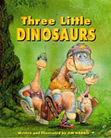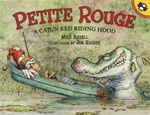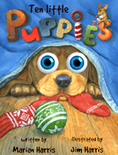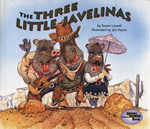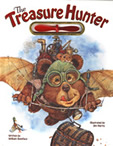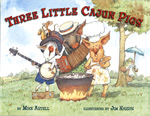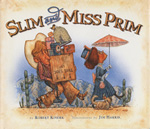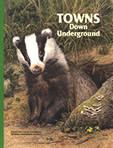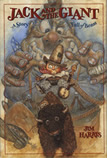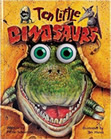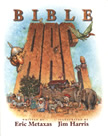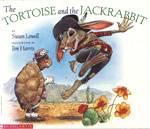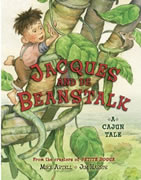Is My Art Profesional???
Is my art good enough?
Can I make a career out of illustration?
Does illustration pay enough money to actually support a family?
These were the burning questions in my mind at the age of 25.
In short: “Is my art professional enough to make a career out of illustration – and will it pay enough to cover A) the rent, and B) shopping (with reasonable regularity) at Strack & VanTil’s – the local meat, veggies, and excellent-glazed-donuts dispensary?”
(Good, serious questions, you will admit.)
True, these had also been the burning questions in my mind at age 15.
And 10.
And 5.
In fact, I was born with a desire to be an artist, and the horrible fear that I would never be good enough to succeed.
This is the huge downside of creativity. If you’re an artist, I’m sure you already know this.
Anyway, back to the story. At 25 I was done with university (even including a few years of art classes – in which I earned zero accolades), had worked a couple typical just-done-with-college jobs, and was thinking to myself, ‘it’s now or never.’
If I’m ever going to be an artist -- an honest-to-goodness, professional, career artist – I have to try now.
But I had no clue where to start.
The thought of taking my portfolio around to a bunch of people was pretty daunting. Especially since I wasn’t quite sure which people on the planet to show it to. The ones called “editors” and “art directors” seemed to exist in an ethereal somewhere without a phone number or address. And anyway, I had no idea if my art was worth showing them. I really didn’t relish the thought of dragging my art around to office building after office building only to hear cackles of mirth wafting down the elevator shaft after me, as I made my hasty departure.
It wasn’t a pretty sight.
That’s when I met John. John ran a tobacco shop. Now, I don’t smoke, but that doesn’t change the fact he ran a tobacco shop. Five-hundred dollar pipes, fancy European tobacco blends, etc.
John was a no-holds-barred type character and when he found out I was hoping to be an artist, he plunged right in. “I’ve got a friend,” he said, “and you’ve got to meet him.”
I was skeptical.
“He’s an artist, a really good artist,” said John. “He can give you good advice.”
Right, I thought. What does a tobacconist’s friend know about good art? I mean, I wasn’t sure about my own art being any good, but I wasn’t hoping for critical advice from everybody’s friend who dabbled in watercolors!! Critiques from qualified artists were scary enough... Comments from helpless wonders thrilled me even less.
But I tried to be polite.
Oh, who is he? I managed.
Well, John said, he paints covers for BLEEEEEEEP (Fill in name of VERY big magazine here).
My attitude improved instantly.
Trying not to seem over-eager... “Would next Tuesday afternoon be okay?” I blurted. “ I’m not doing anything then and if it wouldn’t be too much trouble, I’d LOVE to um, well, talk to him.”
This was doublespeak for “I could bring my portfolio along and maybe he would even look at it and if he doesn’t throw up all over it, I could take that as a sign that I was cut out to be a professional artist!!!!”
The next Tuesday we were in the car, driving to the opposite side of Chicago, with my portfolio in the backseat and my knees banging together louder than the coins John was dropping in the tollbooth machines every five minutes.
The artist was very nice. He was also very talented. He also made – by all appearances -- a rather cushy living. He had an impressive list of clients and while I didn’t want to do art just exactly like his, there was no doubt he had made a successful career out of marketing his illustrations.
At some point, John cleared his throat and suggested offhandedly that he thought I might have brought my portfolio along.
Great, let’s see it! said the artist.
Quaking, I handed over my portfolio, ‘Portfolio’ serving as a euphemism for a hastily assembled collection of half-baked paintings and pencil drawings on every conceivable substrate in every medium known to man (including, yes, house paint).
A good portion of the artwork wasn’t really finished – at least I thought it could use a LOT more time – but there it was, in front of the illustrator.
At first he didn’t say anything.
I suddenly realized this whole trip had been a huge mistake. I wanted to sink right through the shag carpeting on his condo floor.
Finally he pointed at one piece. “That’s different,” he said. “I’ve never seen anything like that.”
This didn’t sound exactly like a compliment, but I managed a wan smile.
Apparently this was the right response, because he kept talking.
It was nice, he said.
He thought it would sell.
In fact, he thought my stuff was mostly professional quality.
He went on to explain how he had gotten into the illustration business (it started with dropping out of college apparently – though it was too late for that now, for me), how he had gotten started working for the very-big-magazine and for his other clients, and how he was considering branching off into yet another segment of the illustration industry. He also threw in a few more encouraging comments about my portfolio.
He kept talking and I kept listening, but my mind was whizzing.
I felt like a door was opening.
If this guy thought my work was up to par, AND if I could utilise his tips on marketing, AND
If I could copy his style of working with clients...
I could be an illustrator!!!
That was a happy day for me.
I came home – not sure that I could make a living as an illustrator – but sure that it was a reasonable possibility to pursue.
So I pursued it.
Honestly, I know it was God that made anybody ever buy my art.
But I think it was also God who brought me into contact with that illustrator – and used him to tell me, “Yes, this illustrator-career idea is a reasonable, workable occupation for you. Go for it.”
That first year of “being in business” we kept a chart on the refrigerator. It listed “name of company that called for illustration work,” “deadline,” and “amount offered.” At the end of the year we totalled it up. It was over $50,000. Now, I didn’t put that much in the bank... but only because I didn’t have enough time to do all the orders!!!
But it was pretty obvious that illustration was indeed a viable career.
I guess the long and short of it is... Bob, if you’re reading this – thanks for the help. It made a huge difference in my life!
Images and Text © 2009 Jim Harris. All Rights Reserved

